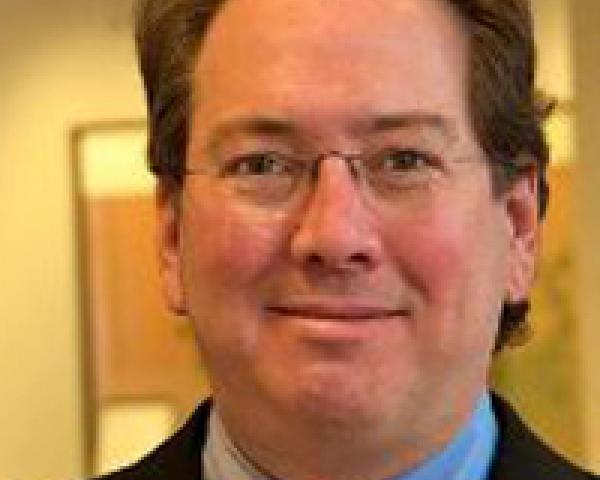In April 2015, Lloyd’s of London launched the Target Operating Model (TOM) project. TOM is a central body responsible for delivering modernization to the still heavily paper-based wholesale insurance transactions in the London insurance markets.
You can state, "I Support TOM," on a registration site or you can "like" TOM on social media. The project has had several "innovation" events. It has an orange logo reminiscent of the 1990s, when orange was the new black. The project has even tried to coin yet another tech mashup term for the London insurance markets surrounding Lloyd’s: InsTech.
This is not the first time the London insurance markets have tried to modernize. They are serial reformers, and their attempts have had varying degrees of success (from total failure to middling impact).
Limnet (London Insurance Market Network) made progress with electronic data interchange in the 1980s and early 1990s. Electronic Placement Support (EPS) worked in the late 1990s, but few used it. Kinnect, at a cost conservatively quoted as £70 million, was abandoned in 2006. Project Darwin, which operated from 2011 to 2013, achieved little. The Message Exchange Limited (TMEL) is a messaging hub for ACORD messages that has had modest success, but most people still use email.
Numerous private exchanges or electronic messaging ventures have gained only partial market shares. Xchanging Ins-Sure Services (XIS), a claims and premiums processing joint venture, was formed in 2000 and runs adequately but still has a lot of paper involved.
A swift walk round Lloyd’s, perhaps passing by the famous Lamb Tavern in Leadenhall Market, reveals a lot of heavy bundles of paper, lengthening the arms of long-term insurers.
Does ontogeny recapitulate phylogeny?
Ernst Haeckel (1834–1919) was a German biologist and philosopher who proposed a (now largely discredited) biological hypothesis, the "theory of recapitulation." He proposed that, in developing from embryo to adult, animals go through stages resembling or representing successive stages in the evolution of their remote ancestors. His catchphrase was “ontogeny recapitulates phylogeny.”
In a similar way, TOM seems to be going through all the previous stages of former wholesale insurance modernization projects, databases, networks and messaging centers, but it may come out at the end to realize the potential of mutual distributed ledgers (aka blockchain technology).
Information technology systems may have now evolved to meet the demanding requirements of wholesale insurance. And wholesale insurance differs from capital market finance in some important ways.
First, insurance is a "promise to pay in future," not an asset transfer today. Second, while capital markets trade on information asymmetry, insurance is theoretically a market of perfect information and symmetry—you have to reveal everything of possible relevance to your insurer, but each of you has different exposure positions and interpretations of risk. Third, wholesale insurance is "bespoke." You can’t give your insurance cover to someone else.
These three points lead to a complex set of interactions among numerous parties. Clients, brokers, underwriters, claims assessors, valuation experts, legal firms, actuaries and accountants all have a part in writing a policy, not to mention in handling subsequent claims.
People from the capital markets who believe insurance should become a traded market miss some key points. Let’s examine two: one about market structure, and one about technology.
TIn terms of market structure: People use trusted third parties in many roles—in finance, for settlement, as custodians, as payment providers and as poolers of risk. Trusted third parties perform three roles, to:
- Validate — confirming the existence of something to be traded and the membership of the trading community
- Safeguard — preventing duplicate transactions, i.e. someone selling the same thing twice or "double-spending"
- Preserve — holding the history of transactions to help analysis and oversight and in the event of disputes.
Concerns over centralization
The hundreds of firms in the London markets are rightly concerned about a central third party that might hold their information to ransom. The firms want to avoid natural monopolies, particularly as agreed information is crucial over multi-year contracts. They are also concerned about a central third party that must be used for messaging because, without choice, the natural monopoly rents might become excessive.
Many historic reforms failed to propose technology that recognized this market structure. Mutual distributed ledgers (MDLs), however, provide pervasive, persistent and permanent records. MDL technology securely stores transaction records in multiple locations with no central ownership. MDLs allow groups of people to validate, record and track transactions across a network of decentralized computer systems with varying degrees of control of the ledger. In such a system, everyone shares the ledger. The ledger itself is a distributed data structure, held in part or in its entirety by each participating computer system. Trust in safeguarding and preservation moves from a central third-party to the technology.
Emerging techniques, such as smart contracts and decentralized autonomous organizations, might, in the future, also permit MDLs to act as automated agents.
Beat the TOM-TOM
Because MDLs enable organizations to work together on common data, they exhibit a paradox. MDLs are logically central but are technically distributed. They act as if they are central databases, where everyone shares the same information.
However, the information is distributed across multiple (or multitudinous) sites so that no one person can gain control over the value of the information. Everyone has a copy. Everyone can recreate the entire market from someone else’s copy. However, everyone can only "see" what their cryptographic keys permit.
How do we know this works? We at Z/Yen, a commercial think tank, have built several insurance application prototypes for clients who seek examples, such as motor, small business and insurance deal-rooms. The technical success of blockchain technologies in cryptocurrencies—such as Bitcoin, Ethereum and Ripple—have shown that complex multi-party transactions are possible using MDLs. And, we have built a system that handles ACORD messages with no need for "messaging."
Z/Yen’s work in this space dates to 1995. Until recently, though, most in financial services dismissed MDLs as too complex and insecure. The recent mania around cryptocurrencies has led to a reappraisal of their potential, as blockchains are just one form of MDL. That said, MDLs are "mutual," and a number of people need to move ahead together. Further, traditional commercial models of controlling and licensing intellectual property are less likely to be successful at the core of the market. The intellectual property needs to be shared.
A message is getting out on the jungle drums that MDLs, while not easy, do work at a time when people are rethinking the future of wholesale insurance.
If TOM helps push people to work together, perhaps, this time, market reform will embrace a generation of technology that will finally meet the demands of a difficult, yet essential and successful, centuries-old market.
Perhaps TOM should be beating the MDL drums more loudly.








